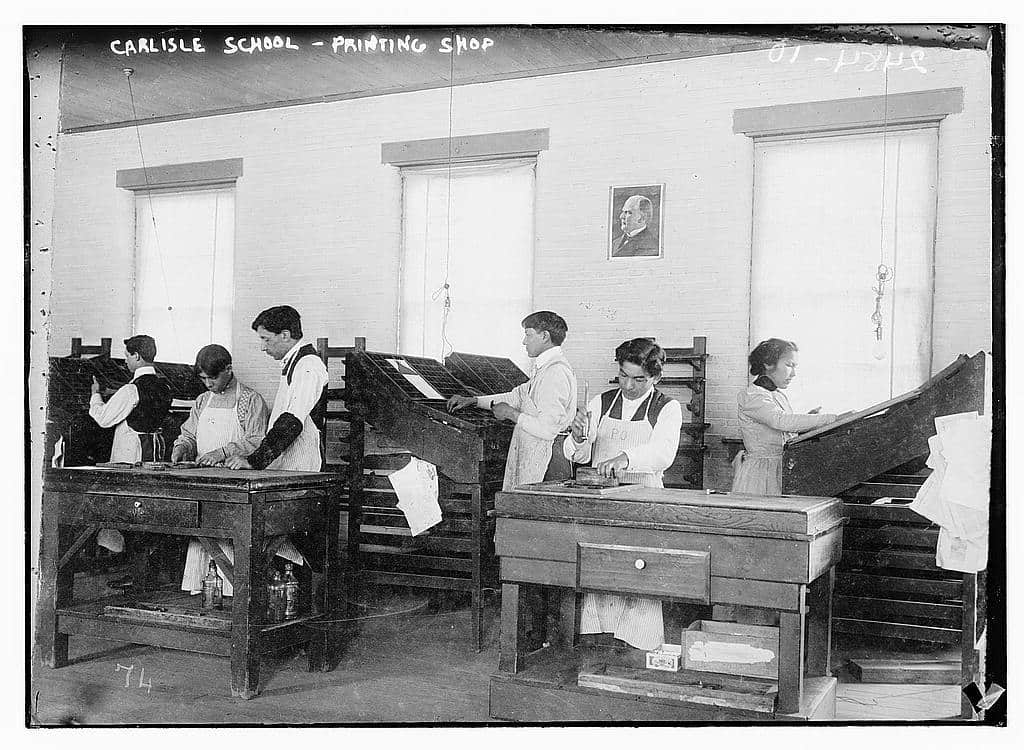
unknown author, https://commons.wikimedia.org/wiki/File:Carlisle_pupils.jpg, 9/28/15
For teaching eleventh (or eighth) grade US History students corroborating and sourcing: This will be taught at the end of the first semester, in a learning segment on Indian boarding schools in the 1880’s.
Skill:
Sourcing and Corroborating
The three sources:
- Richard Henry Pratt’s discussion of the “Indian Problem” and the need and success of boarding school’s for Native children: Richard Henry Pratt
- A letter from a young Indian girl in a boarding school (begin reading at the second “The Indians” to “The Chinese” on page 141) Letter
- It is important to remember that these letters were forced, they were read and edited by boarding school officials and often times students were told what to write.
- Reflection (Begin reading at “THE CUTTING OF MY LONG HAIR” on page 186 end on “THE DEVIL” on page 189)Reflection
- This was written by Zitkala Sa. She was a victim of the Indian boarding schools. Her narration is vivid but avoids the graphic imagery of some of the physical abuse that occurred. For more information on her follow this link.
Scaffolding questions:
- What happened in the boarding schools?
- Why were students there?
- How did they describe the school?
- Complete a rhetorical triangle for it!
Instructional strategies:
- Students form groups of three. Together they read one of the three pieces and answer the scaffolding questions.
- Students form a second group composed of themselves and two people who read the other pieces. In this group students briefly explain their article and, as a group, fill in a Venn Diagram (three circles) using the questions they answered in their first group.
- As a class we discuss their Venn diagram. Posing the questions “Why aren’t all the answers in the center portion?” “What can we learn from the information in the center?” “What can we infer about the information that overlaps between two circles but not all three?” “What does this tell us about the sources that overlap most?”
- Students write a question that is best answered by the reflection. Then answer it with a one page quick-write.
Reflection: I will need to type out some of the sources in order to shorten them because they are scans and not word documents that one could copy and paste. While presenting I realized that it may work well with younger students as an introduction but I still worry about the emotional and psychological effects of discussing such a serious and traumatic subject. I cannot use it unfortunately because I am with sixth grade English students. I also think I could instead provide them with eight questions and ask them to decide which source or sources would answer each best and then ask them to answer one of them.



